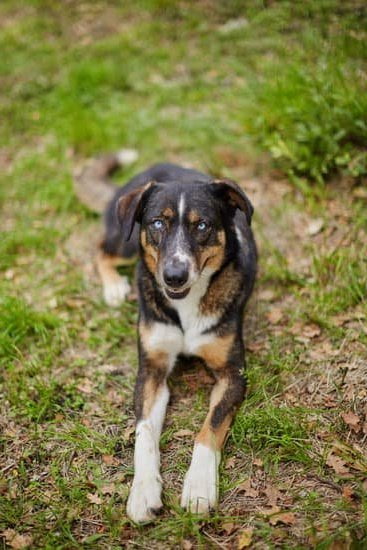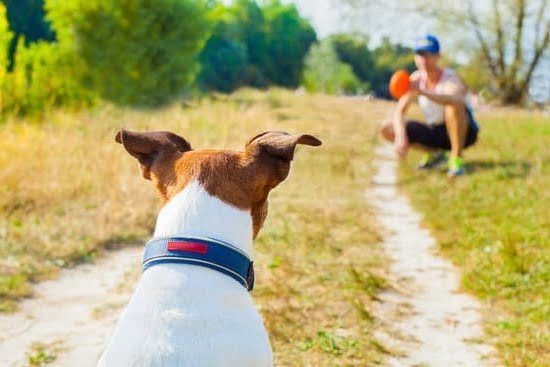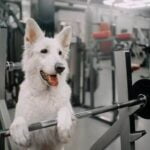Dogs near busy roads can face significant dangers if not properly trained to stay away from them. In this article, we will discuss how to train your dog to avoid busy roads and ensure their safety. With the right training methods and techniques, you can establish boundaries, introduce recall commands, and use positive reinforcement to keep your furry friend away from harm’s way.
One of the first steps in training your dog to stay away from busy roads is understanding the potential risks involved. Dogs that wander near traffic are at high risk of accidents or even fatalities. By recognizing these dangers, you can appreciate the importance of proper training and take proactive steps to keep your pet safe.
Choosing the right training method for your dog is crucial in teaching them to stay away from busy roads. Whether it’s leash training, establishing safe zones in your home, or using physical barriers, finding the approach that works best for your pet’s behavior is key. By following the tips in this article, you can create a safe environment for your dog and prevent any potential accidents near busy roads.
Choosing the Right Training Method for Your Dog’s Safety
When it comes to keeping your furry friend safe from busy roads, choosing the right training method is crucial. There are various techniques and approaches you can use to train your dog to stay away from dangerous areas. Here are some effective methods you can consider:
- Positive Reinforcement: This method involves rewarding your dog for good behavior, such as staying away from the road. Use treats, praise, or toys to reinforce the desired behavior.
- Clicker Training: Clicker training is a form of positive reinforcement where you use a clicking sound to mark the correct behavior. This can be especially useful for teaching your dog to stay away from busy roads.
- Boundary Training: Establish clear boundaries in your home or yard to help your dog understand where they should not go. This can include using physical barriers like fences or gates.
It’s important to choose a training method that suits your dog’s personality and needs. Some dogs may respond better to certain techniques than others, so be prepared to try different approaches until you find what works best for your furry companion.
Remember that consistency and patience are key when training your dog to stay away from busy roads. It may take time for them to learn and understand the boundaries you’ve set, so remain persistent in your efforts.
By investing time and effort into training your dog effectively, you can ensure their safety near busy roads and give yourself peace of mind knowing that they are well-protected.
Establishing Boundaries and Safe Zones in Your Home
One of the most crucial steps in training your dog to stay away from busy roads is to create boundaries and safe zones within your home. By setting up designated areas where your dog is allowed to roam freely and ensuring they understand where they are not permitted to go, you can help minimize the risk of them wandering towards dangerous roads.
Creating a Safe Space
Start by designating certain areas of your home or yard as safe zones for your dog. This can include specific rooms, a fenced-in area in your backyard, or even a designated spot indoors. Make sure these safe spaces are equipped with comfortable bedding, toys, food and water bowls, and anything else your dog may need.
Using Visual Markers
Consider using visual markers such as baby gates or indoor pet barriers to physically block off areas that are off-limits to your dog. Training them to recognize these barriers will help reinforce where they are not allowed to go. Additionally, using signs or signals like “No Entry” commands can also aid in communicating boundaries effectively.
Consistent Reinforcement
Consistency is key when it comes to establishing boundaries for your dog. Make sure every member of your household is on the same page and enforces the rules consistently. By setting clear boundaries and providing positive reinforcement when your dog respects them, you’ll be helping them learn how to navigate their environment safely and stay away from busy roads.
By implementing these strategies for creating boundaries and safe zones within your home, you will be taking proactive steps towards training your dog to stay away from busy roads. Remember that patience, consistency, and positive reinforcement are essential elements in ensuring the safety of your beloved furry companion.
Introducing Leash Training and Recall Commands
When it comes to keeping your dog safe near busy roads, leash training and mastering recall commands are essential skills to ensure their well-being. These training methods can prevent your furry friend from wandering into dangerous traffic and provide you with a sense of security when out on walks or adventures. Here are some tips on how to effectively train your dog to stay away from busy roads:
- Start by introducing your dog to a leash in a positive and calm way. Allow them to get used to wearing the leash indoors before venturing outside.
- Practice walking on the leash in quiet areas first, gradually increasing the distractions to simulate real-life scenarios near busy roads.
- Teach your dog the “come” command by using treats or toys as motivation. Start in a controlled environment and gradually increase the distance between you and your pup.
By incorporating leash training and recall commands into your routine, you are equipping your dog with the necessary tools to stay safe and away from busy roads. Consistency, patience, and positive reinforcement are key components in this training process.
- Remember to always praise and reward your dog for complying with commands and staying by your side during walks.
- If your dog shows signs of fear or resistance towards the leash or recall commands, seek professional guidance from a certified trainer who specializes in behavior modification.
With dedication and the right approach, you can train your beloved pet to stay away from busy roads, providing them with a safe environment to thrive in while enjoying quality time together outdoors.
Utilizing Positive Reinforcement Techniques for Effective Training
Utilizing positive reinforcement techniques is a key component in training your dog to stay away from busy roads. Positive reinforcement involves rewarding your dog for good behavior, such as staying within safe boundaries or responding to recall commands. This method helps reinforce desired behaviors and encourages your dog to make the right choices when near roads.
One effective way to use positive reinforcement is by offering treats, praise, or playtime whenever your dog follows commands or stays away from the road. By associating these rewards with staying safe, your dog will be more inclined to repeat the behavior in the future. Consistency is crucial in this approach, so be sure to reward your dog every time they exhibit the desired behavior.
Another positive reinforcement technique is clicker training, where a clicking sound marks the exact moment when your dog does something correctly. This method can help clarify to your dog what behavior is being rewarded and facilitates clear communication during training sessions. With time and patience, your dog will learn that staying away from busy roads leads to positive outcomes.
| Positive Reinforcement Techniques | Benefits |
|---|---|
| Offering treats, praise, or playtime | Reinforces safe behavior near roads |
| Clicker training | Marks correct behaviors for clearer communication |
Implementing Physical Barriers to Prevent Access to the Road
One of the most effective ways to ensure your dog stays away from busy roads is by implementing physical barriers to prevent access. This can include installing fences, gates, or other structures that block off any direct paths to the road. By creating a clear boundary between your property and the road, you can help keep your dog safe and secure within the confines of your home.
Choosing the Right Type of Physical Barrier
When selecting a physical barrier for your property, consider factors such as the size and breed of your dog, as well as any potential escape routes they may use. A sturdy fence that is tall enough to prevent jumping or climbing over is essential for larger breeds or energetic dogs. On the other hand, smaller dogs may require a barrier with smaller gaps that they cannot squeeze through.
Supplementing Barriers With Visual Deterrents
In addition to physical barriers, you can also use visual deterrents to further discourage your dog from approaching the road. This can include things like motion-activated sprinkler systems, reflective tape, or even scarecrows placed strategically along the boundary line. These additional measures can help reinforce the message that the road is off-limits and encourage your dog to stay within safe areas of your property.
Engaging in Regular Training Sessions to Reinforce Good Behavior
Engaging in regular training sessions is crucial when teaching your dog to stay away from busy roads. Consistency is key in reinforcing good behavior and ensuring that your canine companion understands the importance of staying within safe boundaries. By incorporating short but frequent training sessions into your daily routine, you can help your dog learn and retain the necessary skills to stay out of harm’s way.
During these training sessions, focus on practicing commands such as ‘stay’ and ‘come’ in a controlled environment before gradually moving closer to areas near the busy road. Use positive reinforcement techniques like treats, praise, or toys to reward your dog for following commands and staying away from the road. This will establish a positive association with obeying commands and reinforce good behavior effectively.
Additionally, consider incorporating distractions into your training sessions to mimic real-life situations near a busy road. By gradually introducing distractions like other animals or noises, you can teach your dog to remain focused on following commands despite potential temptations. This will help strengthen their impulse control and minimize the risk of them wandering onto a busy road when outside of a controlled environment.
| Training Techniques | Benefits |
|---|---|
| Regular practice of ‘stay’ and ‘come’ commands | Helps reinforce obedience and prevent wandering onto busy roads |
| Use of positive reinforcement techniques | Creates a positive association with following commands and staying safe |
| Incorporating distractions into training sessions | Improves impulse control and prepares dogs for real-life scenarios near busy roads |
Supervising Your Dog’s Behavior and Progress Continuously
When it comes to keeping your dog safe from the dangers of busy roads, supervision is key. Even with the best training in place, accidents can still happen if you’re not actively watching your furry friend.
Make sure to keep a close eye on your dog whenever they are outside, especially if they have a tendency to wander or chase after things. By being vigilant and present, you can quickly intervene and redirect your dog if they show any signs of heading towards the road.
Additionally, it’s important to monitor your dog’s progress regularly as you continue their training. Check in on how they respond to commands, their behavior around the road, and any improvements or setbacks they may be experiencing.
This will help you understand what areas may need more work or if there are any additional measures that need to be taken to keep them safe. Consistent monitoring will allow you to adapt your training approach accordingly and ensure that your dog stays away from busy roads effectively.
As part of supervising your dog’s behavior and progress continuously, consider using tools such as GPS trackers or cameras to keep an extra eye on them, especially when you’re not around. These devices can provide peace of mind knowing that you can locate your dog at any time and see what they are up to.
In case your dog does manage to stray towards a busy road despite all efforts, having these tools can help you quickly locate them and prevent a potential disaster. Remember, constant supervision is crucial in ensuring the safety of your beloved pet near busy roads.
Seeking Professional Help and Support if Necessary
In conclusion, keeping our furry friends safe from the dangers of busy roads is a crucial responsibility as pet owners. Understanding the risks associated with allowing our dogs near busy roads is the first step in ensuring their safety. By recognizing the potential dangers, we can take proactive measures to train our dogs to stay away from these risky areas.
Choosing the right training method for your dog’s safety is essential in effectively teaching them to avoid busy roads. From establishing boundaries and safe zones within your home to introducing leash training and recall commands, there are various techniques you can utilize to keep your dog away from harm. Positive reinforcement methods can also be highly effective in encouraging good behavior and deterring them from venturing too close to busy streets.
While implementing physical barriers and engaging in regular training sessions are crucial steps in teaching your dog to stay away from busy roads, it is equally important to continuously supervise their behavior and progress. Seeking professional help and support when necessary is also advisable, especially if you encounter challenges or obstacles during the training process. Remember, with patience, consistency, and proper guidance, you can successfully train your dog to stay away from dangerous areas such as busy roads.
Frequently Asked Questions
How Do I Train My Dog to Stay Away From the Road?
Training your dog to stay away from the road involves consistent training, positive reinforcement, and patience. Start by teaching your dog basic obedience commands like “sit” and “stay” before progressing to practicing those commands near the road. Use treats or toys as rewards for staying away from the road.
How Do You Desensitize a Dog to Traffic?
Desensitizing a dog to traffic requires gradual exposure to the sights and sounds of traffic in a controlled environment. Start by walking your dog near a quiet road, rewarding calm behavior. Slowly increase exposure to busier roads while rewarding calm and relaxed behavior.
How Do You Train a Dog to Stay Away From Cars?
Teaching a dog to stay away from cars involves training them to respond to verbal cues like “stop” or “no.” Start by practicing these commands on walks with minimal distractions before gradually increasing the difficulty level by adding cars into the mix. Consistent training, positive reinforcement, and patience are key in this process.

Welcome to the blog! I am a professional dog trainer and have been working with dogs for many years. In this blog, I will be discussing various topics related to dog training, including tips, tricks, and advice. I hope you find this information helpful and informative. Thanks for reading!





